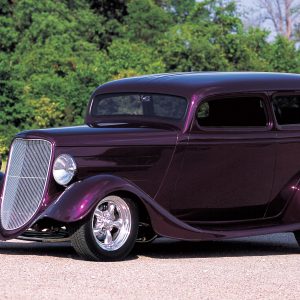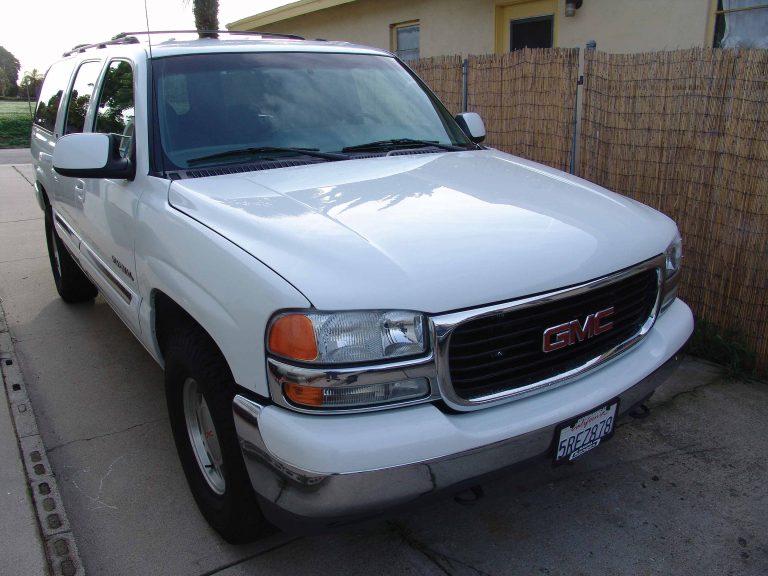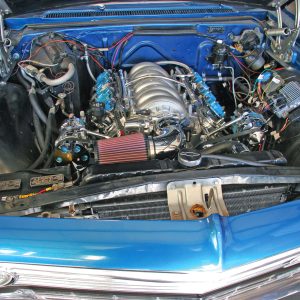


THE AUTO BUILDER
Featured
- All Post
- 20 High Priority - SR Super Rod
- Builds
- 25 High Priority - FB Ford Builder
- Cars
- 30 High Priority - AR American Rodder
- 01 Post Status
- 35 High Priority - RD Rodders Digest
- 40 High Priority - OTR On the Road
- 45 High Priority - SRB Street Rod Builder
- 50 High Priority - TB Truck Builder
- 55 High Priority - BSCENE Buckaroo Scene
- 60 High Priority - FPB Family Power Boat
- Trucks
- Swaps
- Performance Boats
- _000 Home Sliders
- Builders
- 00 Sidebars
- Manufacturers
- 05 High Priority - HCI Hot Compact Imports
- 05 Publications
- 10 High Priority - CR Chevy Rumble
- Back
- Chassis
- Engine
- Fuel System
- Electrical
- Exhaust
- Transmission / Drivetrain
- Suspension
- Steering
- Brakes
- Wheels and Tires
- Interior
- Exterior
- Accessories
- Power Adders
- Back
- Chassis
- Engine
- Fuel System
- Electrical
- Exhaust
- Transmission / Drivetrain
- Suspension
- Steering
- Brakes
- Wheels and Tires
- Interior
- Exterior
- Accessories
- Power Adders
- Back
- Chassis
- Engine
- Electrical
- Exhaust
- Fuel System
- Transmission / Drivetrain
- Suspension
- Steering
- Brakes
- Wheels and Tires
- Interior
- Exterior
- Accessories
- Power Adders
- Back
- Chassis
- Engine
- Electrical
- Exhaust
- Fuel System
- Transmission / Drivetrain
- Suspension
- Steering
- Brakes
- Wheels and Tires
- Interior
- Exterior
- Accessories
- Power Adders
- Back
- Chassis
- Engine
- Fuel System
- Electrical
- Exhaust
- Transmission / Drivetrain
- Suspension
- Steering
- Brakes
- Wheels and Tires
- Interior
- Exterior
- Accessories
- Power Adders
- Back
- Chassis
- Engine
- Fuel System
- Electrical
- Exhaust
- Transmission / Drivetrain
- Suspension
- Steering
- Brakes
- Wheels and Tires
- Interior
- Exterior
- Accessories
- Power Adders
- Back
- Chassis
- Engine
- Fuel System
- Electrical
- Exhaust
- Transmission / Drivetrain
- Suspension
- Steering
- Brakes
- Wheels and Tires
- Interior
- Exterior
- Accessories
- Power Adders
- Back
- Engine
- Fuel System
- Electrical
- Outdrives
- Steering
- Interior
- Accessories
- Power Adders
- Exterior and Hull
- Back
- Chassis
- Engine
- Electrical
- Exhaust
- Fuel System
- Transmission / Drivetrain
- Suspension
- Steering
- Brakes
- Wheels and Tires
- Interior
- Exterior
- Accessories
- Power Adders
- Back
- Chevrolet
- Cadillac
- Pontiac
- AMC
- Buick
- Jeep
- Lincoln
- Ford
- Honda
- GMC
- BMW
- Mitsubishi
- Dodge
- Nissan
- Chrysler
- Subaru
- Toyota
- Plymouth
- Mercury
- Volvo
- Volkswagen
- Oldsmobile
- Acura
- Back
- 05 Pub HCI Hot Compact Imports
- 15 Pub 4x4 4x4 Builder
- 20 Pub SR Super Rod
- 25 Pub FB Ford Builder
- 30 Pub AR American Rodder
- 35 Pub RD Rodders Digest
- 40 Pub OTR On the Road
- 55 Pub BSCENE Buckaroo Scene
- 10 Pub CR Chevy Rumble
- 50 Pub TB Truck Builder
- 60 Pub FPB Family Power Boat
- 45 Pub SRB Street Rod Builder
- Back
- Chip Foose
- Ring Brothers
- Jack Fuller
- Bob Cullipher
- Jerry Nichols
- Bobby Alloway
- Jesse James
- Carl Casper
- J.F. Launier
- Steve Sellers
- Boyd Coddington
- Rad Rides by Troy
- Cal Auto Creations
- George Barris
- West Coast Customs
- Back
- Street Rods
- Hot Rods
- Late Model
- Drag Race
- Handling
- Compact Cars
- Chassis
- Engine
- Fuel System
- Electrical
- Exhaust
- Transmission / Drivetrain
- Suspension
- Steering
- Brakes
- Wheels and Tires
- Interior
- Exterior
- Accessories
- Power Adders
- Chassis
- Engine
- Fuel System
- Electrical
- Exhaust
- Transmission / Drivetrain
- Suspension
- Steering
- Brakes
- Wheels and Tires
- Interior
- Exterior
- Accessories
- Power Adders
- Chassis
- Engine
- Electrical
- Exhaust
- Fuel System
- Transmission / Drivetrain
- Suspension
- Steering
- Brakes
- Wheels and Tires
- Interior
- Exterior
- Accessories
- Power Adders
- Chassis
- Engine
- Electrical
- Exhaust
- Fuel System
- Transmission / Drivetrain
- Suspension
- Steering
- Brakes
- Wheels and Tires
- Interior
- Exterior
- Accessories
- Power Adders
- Chassis
- Engine
- Electrical
- Exhaust
- Fuel System
- Transmission / Drivetrain
- Suspension
- Steering
- Brakes
- Wheels and Tires
- Interior
- Exterior
- Accessories
- Power Adders
- Chassis
- Engine
- Fuel System
- Electrical
- Exhaust
- Transmission / Drivetrain
- Suspension
- Steering
- Brakes
- Wheels and Tires
- Interior
- Exterior
- Accessories
- Power Adders
- Back
- 05 Post Imported
- 20 Post Missing Images (All)
- 25 Post Missing Images (Partial)
- 15 Post In Progress
- 30 Post Internal Review
- 40 Post On Hold
- 50 Post Approved
- 10 Post Images Imported
- 17 Post Missing TXT Files
- 18 Post Missing PDF Files
- 27 Post Missing Content
- Back
- Chassis
- Engine Swaps
- Interior Swaps
- Driveline
- Back
- Street Trucks
- OffRoad Trucks
- Chassis
- Engine
- Fuel System
- Electrical
- Exhaust
- Transmission / Drivetrain
- Suspension
- Steering
- Brakes
- Wheels and Tires
- Interior
- Exterior
- Accessories
- Power Adders
- Chassis
- Engine
- Fuel System
- Electrical
- Exhaust
- Transmission / Drivetrain
- Suspension
- Steering
- Brakes
- Wheels and Tires
- Interior
- Exterior
- Accessories
- Power Adders
- Back
- 01 Sidebar Left
- 01 Sidebar Right
Spotlighter
POPULAR READS
NOT JUST AN EVERYDAY CAM
But Made for an Everyday Driver
Author

Charles Jefferies
Story & Photography

It can be argued that one of the best mods you can make to an LS-based or Gen III motor is a camshaft change. With the number of aftermarket companies making many different types, a good cam can be found for anywhere from $300 to $1,000, depending upon what type of power you want to make and how sophisticated the cam package is. Because 99.99 percent of all vehicles on the road today are computer controlled, most aftermarket companies are able to suggest whether a new tune will be necessary or if the stock one will suffice. But with so many different options out there, it can be quite confusing as to which is the right one for you.
You will see things listed such as lobe separation angle (LSA), duration and valve lift. But how do you sort through all of them without guessing and ending up with a cam that’s nowhere near the right one for you and your intended use. First you have to figure out just what type of driveability you are willing to give up, and be honest here. A great many people have installed a cam with huge lift, and especially way too much duration, only to regret the selection. We suggest that if you drive your vehicle every day, you won’t want something radical, but, rather, a good profile that exhibits near stock idling characteristics and excellent off-idle response.
Let’s first look at valve lift. Cams will be listed by the amount a valve opens at full lift. It is listed in inches, so it will read something like “.560 inch.” It’s pretty straightforward. Most aftermarket companies will have a cam with at least .550 inch and on up. On the cam card, most companies will show the lobe lift, so that number multiplied by the rocker ratio gives you total valve lift.
The next thing to look at is duration. This is the amount of time the valve stays open based on the degrees of the cam. This plays a big factor in driveability. A cam with too much duration will have a noticeable “lope” at idle and cause the engine to make very little manifold vacuum. This can affect things such as braking ability and off-idle driveability. We tend to like cams with a greater amount of duration on the exhaust valve to allow for more spent fuel to exit. Something in the neighborhood of 210/220 degrees (measured at .050 inch) of duration seems to be good for driveability.
Most cam manufacturers will measure cam duration at .050-inch lift. This makes checking cams easier, as it is very difficult to detect the moment of instant valve lift due to the opening ramp profile. The .050-inch measurement has been universally accepted, as it eliminates interpretation.
The next thing to be concerned with is the LSA. This is the angle of separation between the intake and the exhaust valve peaks, and it is commonly referred to as the camshaft centerline. Typically, the lower the separation, the more the valves overlap. This means less driveability and more lope, but this also means you can make more power overall.
In this case, Garret Harmon from Magnuson Products was looking for a cam to make good peak power, but not suffer any low-speed driveability issues. The truck in question was a 2001 Yukon XL with a 5.3-liter motor.
Being on the cutting edge of technology in the blower business, Magnuson Products is familiar with cam specs that work optimally with its blower systems. One cam that has showed promise is the GT2-3 from Lingenfelter Performance Engineering (LPE). The cam card from LPE reads 207/220 degrees duration (at .050 inch) and .573/.580-inch lift (intake and exhaust) with a 1.7 rocker, ground on 118.5 degrees centerline. This cam comes as a kit with Z06 Corvette valvesprings that allow for more seat pressure to combat valve float, and taller installed height to accommodate more valve lift.
Before the cam swap, the Yukon XL made 341 rear-wheel horsepower and 379 lb-ft of torque. Afterward it measured 405/405 at the dyno. The gain of 64 horsepower is huge, no doubt, but the real advantage is that the truck still pulls hard at almost 6,500 rpm. Follow along as we watch Harmon install the LPE GT2-3 cam and kit.
ARTICLE SOURCES

Lingenfelter Performance Engineering
Decatur Build Center
1557 Winchester Road
Decatur, Indiana 46733
(260) 724-2552

Magnuson Products, LLC
1990 Knoll Dr.
Ventura, CA 93003
+1 (805) 642-8833














